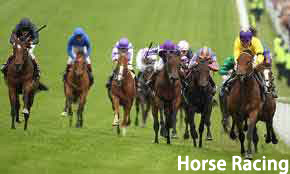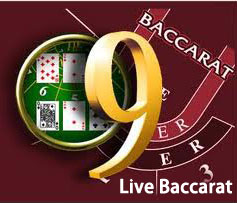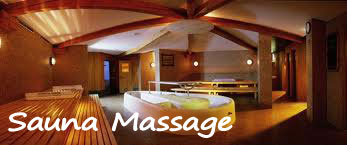- Activities >> Macau Attractions
- Macau World Heritage
- Publisher: admin Time:2011/11/13 Hits:5381
Over history Macau has been an important gateway through which western civilization entered China; for hundreds of years this piece of land has nurtured a symbiosis of cultural exchange, shaping the unique identity of Macau.
"The Historic Centre of Macau" is living testimony to the assimilation and continued co-existence of eastern and western cultures over a unique chapter in history. It stands witness to successful East-West cultural pluralism, reflecting China's persistent openness to the influx of western cultural concepts throughout that historic timeframe; it is the fruit of mutual respect and tolerance between different cultures and civilizations. Its value lies not only in the completeness of the architectural and urban infrastructures, but also in the fact that these have retained their original function and spirit to the present day. As an integral part of the city's life, the conservation of "The Historic Centre of Macau" is crucial to the local community, while on a broader context, it represents a part of Chinese and world history, which, due to its historic and cultural significance must be preserved.
"The Historic Centre of Macau" has now been inscribed on the World Heritage List, making it the 31st designated World Heritage site in China on 15 July 2005. This international recognition will further raise community awareness and foster an appreciation of heritage values, thus providing a positive influence on future urban redevelopment programmes that will evolve in line with heritage conservation.
The Historic Centre of Macau
"The Historic Centre of Macau" is a living representation of the city's historic settlement, encompassing architectural legacies interwoven in the midst of the original urban fabric that includes streetscapes and piazzas, such as Barra Square, Lilau Square, St. Augustine's Square, Senado Square, Cathedral Square, St. Dominic's Square, Company of Jesus Square and Camões Square. These major urban squares and streetscapes provide the linkage for a succession of over twenty monuments, including A-Ma Temple, Moorish Barracks, Mandarin's House, St. Lawrence's Church, St. Joseph's Seminary and Church, Dom Pedro V Theatre, Sir Robert Ho Tung Library, St. Augustine's Church, "Leal Senado" Building, Sam Kai Vui Kun (Kuan Tai Temple), Holy House of Mercy, Cathedral, Lou Kau Mansion, St. Dominic's Church, Ruins of St. Paul's, Na Tcha Temple, Section of the Old City Walls, Mount Fortress, St. Anthony's Church, Casa Garden, the Protestant Cemetery and Guia Fortress (including Guia Chapel and Lighthouse) altogether known as "The Historic Centre of Macau".
Website of Macau World Heritage: https://www.wh.mo
A-Ma Temple
A-Ma Temple already existed before the city of Macau came into
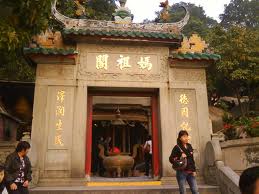 being. It consists of the Gate Pavilion, the Memorial Arch, the Prayer Hall, the Hall of Benevolence, the Hall of Guanyin, and Zhengjiao Chanlin (a Buddhist pavilion). The variety of pavilions dedicated to the worship of different deities in a single complex make A-Ma Temple an exemplary representation of Chinese culture inspired by Confucianism, Taoism, Buddhism and multiple folk beliefs.
being. It consists of the Gate Pavilion, the Memorial Arch, the Prayer Hall, the Hall of Benevolence, the Hall of Guanyin, and Zhengjiao Chanlin (a Buddhist pavilion). The variety of pavilions dedicated to the worship of different deities in a single complex make A-Ma Temple an exemplary representation of Chinese culture inspired by Confucianism, Taoism, Buddhism and multiple folk beliefs. 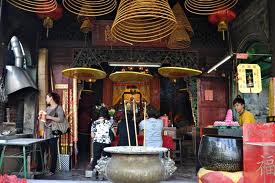
Pedicabs for photo taking
To diversify Macau's tourism products, from October until the end of this year on every Thursday to Sunday from 10:30 am to 1:30 pm and from 2:30 pm to 4:30 pm, pedicabs are placed at the Barra Square (in front of the A-Ma Temple), for visitors and residents to take photos.Moorish Barracks
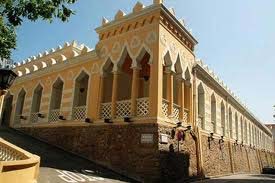
Built in 1874, this building was constructed to accommodate an Indian regiment from Goa appointed to reinforce Macau's police force. Now it serves as the headquarters of the Maritime Administration. The Moorish Barracks is a distinctly neo-classical building integrating architectural elements of Moghul influence.
Lilau Square
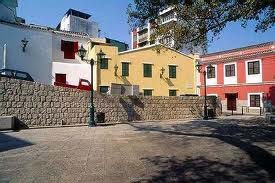
The ground water of Lilau used to be the main source of natural spring water in Macau. The Portuguese popular phrase: "One who drinks from Lilau never forgets Macau" expresses the locals' nostalgic attachment to Lilau Square. This area corresponds to one of the first Portuguese residential quarters in Macau.
Mandarin's House
Built before 1869, this was the traditional Chinese
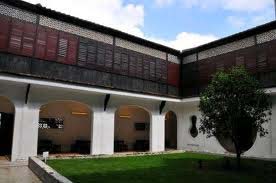 residential compound home of prominent Chinese literary figure Zheng Guanying. It is a traditional Chinese compound consisting of several courtyard houses, displaying a mix of Chinese and Western detailing, such as the use of grey bricks against arched ornamentations and Chinese timber lattice windows against mother-of-pearl window panels of Indian origin.
residential compound home of prominent Chinese literary figure Zheng Guanying. It is a traditional Chinese compound consisting of several courtyard houses, displaying a mix of Chinese and Western detailing, such as the use of grey bricks against arched ornamentations and Chinese timber lattice windows against mother-of-pearl window panels of Indian origin.
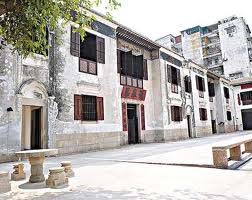
St. Lawrence's Church

Built by the Jesuits in the mid-16th century, this is one of the three oldest churches in Macau. Its present appearance and scale was acquired in 1846. Situated on the southern coastline of Macau overlooking the sea, families of Portuguese sailors used to gather on the front steps of the church to pray and wait for their return,
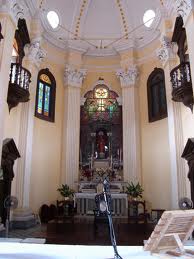 hence it was given the name: Feng Shun Tang (Hall of the Soothing Winds). The neighbourhood where the church is located used to be fairly wealthy, thus explaining the building's scale and wealth of architectural treatment. It is a neo-classical structure, with subtle Baroque decorative inspirations.
hence it was given the name: Feng Shun Tang (Hall of the Soothing Winds). The neighbourhood where the church is located used to be fairly wealthy, thus explaining the building's scale and wealth of architectural treatment. It is a neo-classical structure, with subtle Baroque decorative inspirations.
St. Joseph's Seminary and Church

Established in 1728, the old Seminary, together with St. Paul's College, was the principal base for the missionary work implemented in China, Japan and around the region. St. Joseph's Seminary taught an academic curriculum equivalent to that of a university and in 1800 the Portuguese Queen Dona Maria
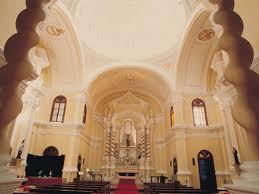 I conferred on it the royal title of "House of the Mission Congregation". Adjacent to the Seminary is St. Joseph's Church, built in 1758, an exemplary model of baroque architecture in China, as noted in UNESCO's 2001 publication Atlas mundial de la arquitectura barroca.
I conferred on it the royal title of "House of the Mission Congregation". Adjacent to the Seminary is St. Joseph's Church, built in 1758, an exemplary model of baroque architecture in China, as noted in UNESCO's 2001 publication Atlas mundial de la arquitectura barroca.St. Augustine's Square
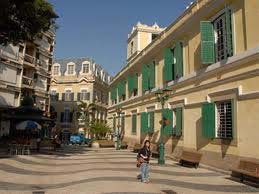 St. Augustine's Square gathers various classified buildings, such as St. Augustine's Church, Dom Pedro V Theatre, St. Joseph's Seminary and Sir Robert Ho Tung Library. The cobblestone pavement unifies the area and reflects a traditionally Portuguese streetscape.
St. Augustine's Square gathers various classified buildings, such as St. Augustine's Church, Dom Pedro V Theatre, St. Joseph's Seminary and Sir Robert Ho Tung Library. The cobblestone pavement unifies the area and reflects a traditionally Portuguese streetscape.
Dom Pedro V Theatre
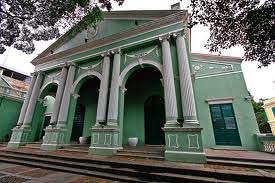
Built in 1860 as the first western-style theatre in China with a seating capacity of 300, this has survived as a highly significant cultural landmark in the context of the local Macanese community and remains a venue for important public events and celebrations.
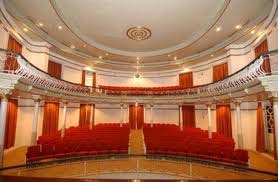
Sir Robert Ho Tung Library
This building was constructed before 1894 and was
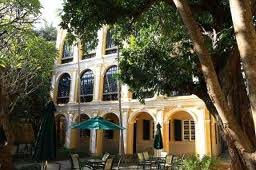 originally the residence of Dona Carolina Cunha. Hong Kong businessman Sir Robert Ho Tung purchased it in 1918, using it as his retreat. He passed away in 1955 and in accordance with his will, the building was presented to the Macau Government for conversion into a public library.
originally the residence of Dona Carolina Cunha. Hong Kong businessman Sir Robert Ho Tung purchased it in 1918, using it as his retreat. He passed away in 1955 and in accordance with his will, the building was presented to the Macau Government for conversion into a public library.
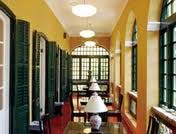
St. Augustine's Church
First established by Spanish Augustinians in 1591,
 this church maintains the tradition of organizing one of the most popular processions through the city, the Easter Procession, involving thousands of devotees. In times past, during heavy rain, the priests used to reinforce the rooftop with fan palm leaves. Seen from afar, these leaves appeared to be dragon's whiskers floating in the wind, hence the local Chinese named it Long Song Miu (Temple of the Long-whiskered Dragon).
this church maintains the tradition of organizing one of the most popular processions through the city, the Easter Procession, involving thousands of devotees. In times past, during heavy rain, the priests used to reinforce the rooftop with fan palm leaves. Seen from afar, these leaves appeared to be dragon's whiskers floating in the wind, hence the local Chinese named it Long Song Miu (Temple of the Long-whiskered Dragon).
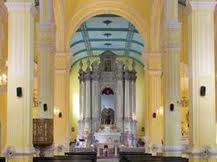
Leal Senado Building

Originally built in 1784, this was Macau's first municipal chamber, a function it maintains to the present. The name "Leal Senado" ("Loyal Senate") derives from the title "City of Our Name of God Macau, There is None More Loyal" which was bestowed by Portuguese King Dom John IV in 1654. The "Leal Senado" Building is neo-classical in design and has retained all its original master walls and primary layout, including the courtyard garden in the back. Inside the building on the first floor there is a ceremonial meeting room that opens onto an elaborate carved library styled after the library of Mafra Convent in Portugal, and a small chapel.
Senado Square
 Senado Square has been Macau's urban centre for centuries, and is still the most popular venue for public events and celebrations today. Located close to the former Senate building, Sam Kai Vui Kun ( Kuan Tai Temple ) is also a reminder of the active participation of the local Chinese community in general civic affairs, providing a clear example of the multicultural dimension of the Macao community. The square is surrounded by pastel coloured neo-classical buildings, creating a consistent and harmonious Mediterranean atmosphere.
Senado Square has been Macau's urban centre for centuries, and is still the most popular venue for public events and celebrations today. Located close to the former Senate building, Sam Kai Vui Kun ( Kuan Tai Temple ) is also a reminder of the active participation of the local Chinese community in general civic affairs, providing a clear example of the multicultural dimension of the Macao community. The square is surrounded by pastel coloured neo-classical buildings, creating a consistent and harmonious Mediterranean atmosphere.Holy House of Mercy
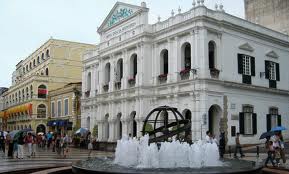
Established by the first Bishop of Macau in 1569, this institution was modelled after one of the most prominent and oldest charitable organizations in Portugal, and was responsible for founding in Macau the first western-style medical clinic and several other social welfare structures that still function to this day. The building is neo-classical in the overall architectural treatment, but also depicts traces of mannerist influence.
Cathedral
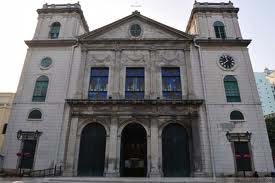
Built around 1622, the Cathedral was originally constructed with taipa (compound material consisting soil and straw). During the restoration of 1780, the religious services of the Cathedral were temporarily transferred to the old chapel of the Holy House of Mercy. The facade is characterized by pilasters and the twin belfries that stand out on the streetscape. The exterior is clad in Shanghai plaster, giving the church a monolithic subdued appearance.
Lou Kau Mansion
The mansion is believed to be built in 1889.This was
 the home of Lou Kau, a prominent Chinese merchant who owned several imposing properties in the city. The location of this grand old house depicts the diverse social profile present in the centre of the old "Christian City", where this traditional Chinese residence stands near Senado Square and Cathedral Square. Lou Kau Mansion is a two-storey, traditional grey-brick courtyard house, with the architectural characteristics of a typical Xiguan Chinese residential building.
the home of Lou Kau, a prominent Chinese merchant who owned several imposing properties in the city. The location of this grand old house depicts the diverse social profile present in the centre of the old "Christian City", where this traditional Chinese residence stands near Senado Square and Cathedral Square. Lou Kau Mansion is a two-storey, traditional grey-brick courtyard house, with the architectural characteristics of a typical Xiguan Chinese residential building.
St. Dominic's Church
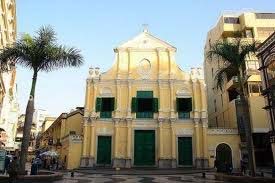
Founded in 1587 by three Spanish Dominican priests who originally came from Acapulco in Mexico, this church is also connected to the Brotherhood of Our Lady of the Rosary. It was here that the first Portuguese newspaper was published on Chinese soil, A Abelha da China ("The China Bee"), on 12th September 1822. The bell tower, at the back of the building, has been modified into a small Museum of Sacred Art, now exhibiting a collection of around 300 artifacts.
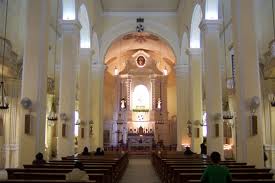
Pedicabs for photo taking
To diversify Macau's tourism products, from October until the end of this year on every Thursday to Sunday from 10:30 am to 1:30 pm and from 2:30 pm to 4:30 pm, pedicabs are placed at the St. Dominic's Square (in front of the St. Dominic's Church), for visitors and residents to take photos.
Ruins of St. Paul's
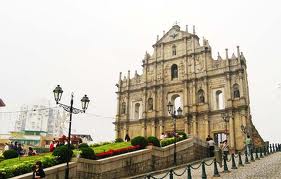
The Ruins of St. Paul's refer to the facade of what was originally the Church of Mater Dei built in 1602-1640, destroyed by fire in 1835, and the ruins of St. Paul's College, which stood adjacent to the Church. As a whole, the old Church of Mater Dei, St. Paul's College and Mount Fortress were all Jesuit constructions and formed what can be perceived as the Macau's "acropolis". Close by, the archaeological remains of the old College of St. Paul stand witness to what was the first western-style university in the Far East, with an elaborate academic programme. Nowadays, the facade of the Ruins of St. Paul's functions symbolically as an altar to the city.
Pedicabs for photo taking
To diversify Macau's tourism products, from October until the end of this year on every Thursday to Sunday from 10:30 am to 1:30 pm and from 2:30 pm to 4:30 pm, pedicabs are placed at the Company of Jesus Square in front of the Ruins of St Paul's, for visitors and residents to take photos.


Section of the Old City Walls
This surviving segment of the city's defence structures,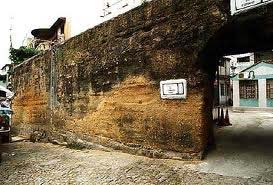 built as early as 1569, is a remnant of an early Portuguese tradition of constructing defensive walls around their port settlements, done also in Africa and India. In Macau, this section bears testimony to the incorporation of local techniques and materials, especially a solid compound named chunambo, an elaborate mixture of clay, soil, sand, rice straw, crushed rocks and oyster shells compacted in successive layers.
built as early as 1569, is a remnant of an early Portuguese tradition of constructing defensive walls around their port settlements, done also in Africa and India. In Macau, this section bears testimony to the incorporation of local techniques and materials, especially a solid compound named chunambo, an elaborate mixture of clay, soil, sand, rice straw, crushed rocks and oyster shells compacted in successive layers.
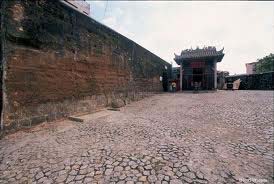
St. Anthony's Church
First built of bamboo and wood before 1560, this is one of the oldest churches in Macau, also marking the site where the Jesuits set up their earliest headquarters in the city. The church was reconstructed in stone several times, while the present appearance and scale of the church dates back to 1930. Previously, members of the Portuguese
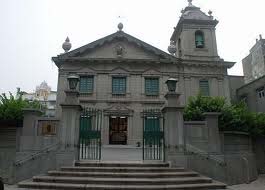
 community would hold wedding ceremonies there, so giving rise to the Chinese name of Fa Vong Tong (Church of Flowers).
community would hold wedding ceremonies there, so giving rise to the Chinese name of Fa Vong Tong (Church of Flowers).
Casa Garden
This house was built in 1770 and was originally the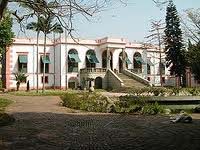 residence of a wealthy Portuguese merchant, Manuel Pereira. At a later period it was rented out to the East India Company. Nowadays the property is the headquarters of the Oriental Foundation.
residence of a wealthy Portuguese merchant, Manuel Pereira. At a later period it was rented out to the East India Company. Nowadays the property is the headquarters of the Oriental Foundation.
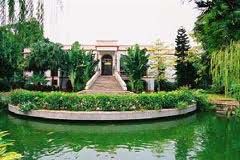
Protestant Cemetery
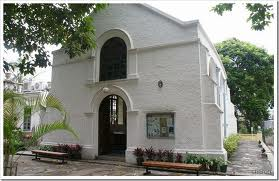
This site provides an insight into Macau's diverse community profile. Located close to the Casa Garden, the Protestant Cemetery provides a comprehensive record of the earliest Protestant community of Macau. Together with the site, the chapel was built in 1821, which is now referred to as
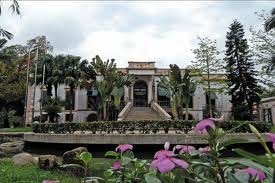 "the Morrison Chapel" in honour of Robert Morrison (1782-1834). George Chinnery (1774-1852) an important British China-trade artist is also buried at the site, alongside various other prominent figures of the time, including several officials from the East India Company, and Protestants from the United States and Britain.
"the Morrison Chapel" in honour of Robert Morrison (1782-1834). George Chinnery (1774-1852) an important British China-trade artist is also buried at the site, alongside various other prominent figures of the time, including several officials from the East India Company, and Protestants from the United States and Britain.- ·Previous:
Chapel
·Next: Temples
- Today:2016/6/26/ Sunday
- Make your homepage | Add to Favorites | Contact us | 简体 | 繁體 | English









